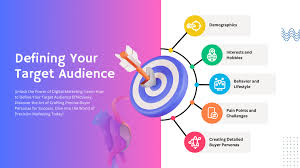Mastering the Art of Content Creation: Strategies for Success in Digital Marketing
The Power of Content in Digital Marketing
In today’s digital age, content has become a crucial element in the success of any marketing strategy. Quality content has the power to engage, inform, and persuade audiences, driving them to take desired actions.
Content serves as the foundation of digital marketing efforts. Whether it’s a blog post, social media update, video, or infographic, compelling content can attract and retain the attention of your target audience. By providing valuable information and addressing their needs and interests, you can establish credibility and build trust with your audience.
Moreover, well-crafted content can significantly impact your search engine rankings. Search engines value fresh, relevant content that is optimised for specific keywords. By consistently producing high-quality content that resonates with your target audience, you can improve your website’s visibility and attract organic traffic.
Content also plays a vital role in nurturing leads and guiding them through the buyer’s journey. By creating content that addresses different stages of the sales funnel – from awareness to consideration to decision – you can influence purchasing decisions and drive conversions.
Furthermore, content allows you to showcase your expertise and differentiate your brand from competitors. By sharing unique insights, thought leadership pieces, case studies, and success stories, you can position yourself as an industry authority and build a loyal following.
In conclusion, content is a powerful tool that can elevate your digital marketing efforts to new heights. By investing in quality content creation and distribution strategies, you can enhance brand awareness, drive engagement, boost conversions, and ultimately achieve business growth.
Essential FAQs on Content Marketing: Strategies, Importance, and Success Measurement
- What is content marketing and why is it important?
- How can I create engaging content for my target audience?
- What are the benefits of incorporating visuals in content creation?
- How often should I update my website’s content for SEO purposes?
- What role does storytelling play in effective content marketing?
- How can I measure the success of my content marketing efforts?
What is content marketing and why is it important?
Content marketing is a strategic approach to creating and distributing valuable, relevant, and consistent content to attract and retain a clearly defined audience. It is important because it allows businesses to connect with their target customers in a meaningful way, providing them with useful information that addresses their needs and interests. By delivering high-quality content, businesses can build trust, establish credibility, and nurture relationships with their audience. Content marketing also helps improve brand visibility, drive organic traffic, enhance search engine rankings, and ultimately drive conversions. In today’s competitive digital landscape, content marketing has become essential for businesses looking to engage with their audience effectively and stand out from the crowd.
How can I create engaging content for my target audience?
Creating engaging content for your target audience requires a deep understanding of their needs, preferences, and behaviours. Start by conducting thorough research to gain insights into what resonates with your audience – their challenges, interests, and aspirations. Tailor your content to provide valuable information, solve problems, or entertain them in a way that is relevant and relatable. Utilise a mix of formats such as articles, videos, infographics, and interactive elements to keep your audience interested and engaged. Incorporate storytelling techniques to make your content more compelling and memorable. Lastly, monitor the performance of your content regularly and gather feedback to continuously refine and improve your approach for maximum impact.
What are the benefits of incorporating visuals in content creation?
Incorporating visuals in content creation offers a myriad of benefits that can enhance the overall impact and effectiveness of your message. Visual elements such as images, infographics, videos, and charts not only capture the audience’s attention but also make complex information easier to understand and more memorable. Visuals can evoke emotions, convey brand personality, and create a more engaging experience for the audience. Additionally, incorporating visuals can improve content shareability on social media platforms and increase website traffic through enhanced visual appeal. Overall, integrating visuals into content creation can significantly boost engagement, comprehension, and retention among your target audience.
How often should I update my website’s content for SEO purposes?
For optimal SEO performance, it is recommended to update your website’s content regularly. Search engines favour fresh and relevant content, so updating your website with new information, blog posts, articles, or product updates can help improve your search engine rankings. Aim to refresh your content at least once a month to keep it current and engaging for both users and search engines. By consistently adding valuable and up-to-date content to your website, you can enhance its visibility, attract more organic traffic, and ultimately improve your SEO performance.
What role does storytelling play in effective content marketing?
Storytelling plays a pivotal role in effective content marketing by creating a compelling narrative that resonates with audiences on an emotional level. Through storytelling, brands can connect with their target audience, evoke empathy, and build a deeper relationship based on shared values and experiences. By weaving a captivating story into their content, marketers can capture attention, drive engagement, and leave a lasting impression that sets them apart from competitors. Storytelling humanises brands, making them relatable and memorable in the minds of consumers, ultimately influencing purchasing decisions and fostering brand loyalty.
How can I measure the success of my content marketing efforts?
Measuring the success of your content marketing efforts is essential to understanding the impact of your strategies and making informed decisions for future campaigns. Key performance indicators (KPIs) such as website traffic, engagement metrics (such as likes, shares, comments), conversion rates, lead generation, and sales attribution can provide valuable insights into the effectiveness of your content. By analysing these metrics regularly and aligning them with your business goals, you can gauge the performance of your content marketing initiatives and make adjustments to optimise results. Additionally, tools like Google Analytics, social media analytics platforms, and marketing automation software can help track and evaluate the performance of your content across various channels.




